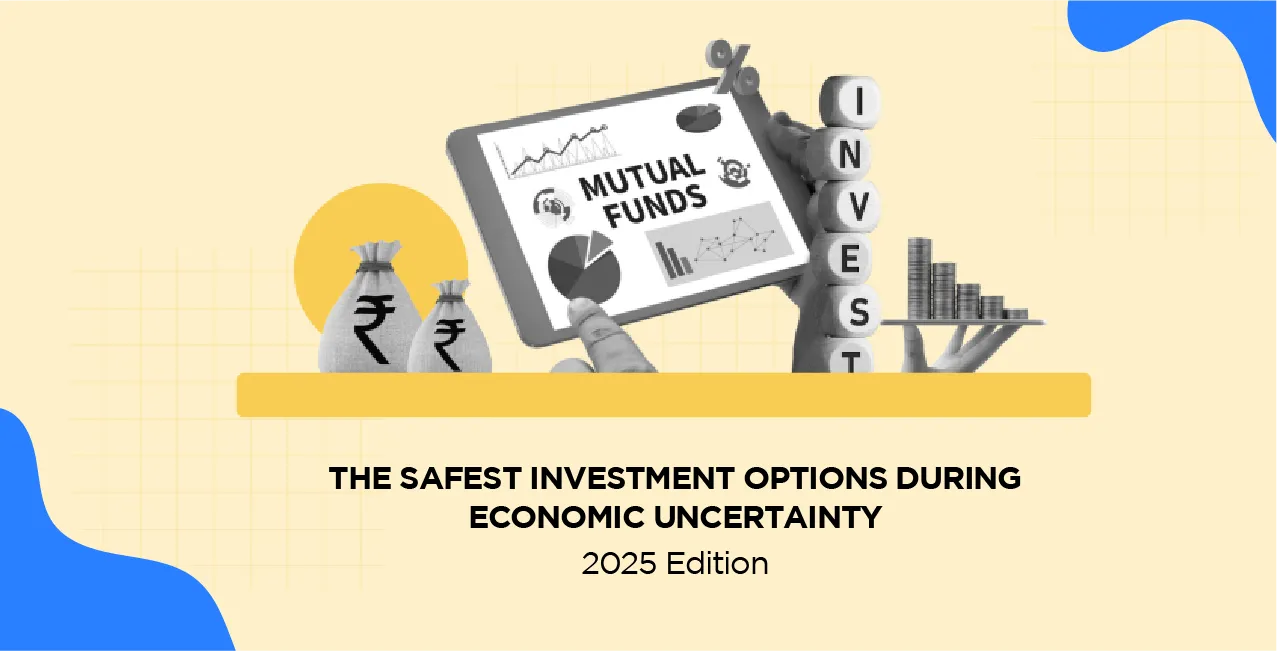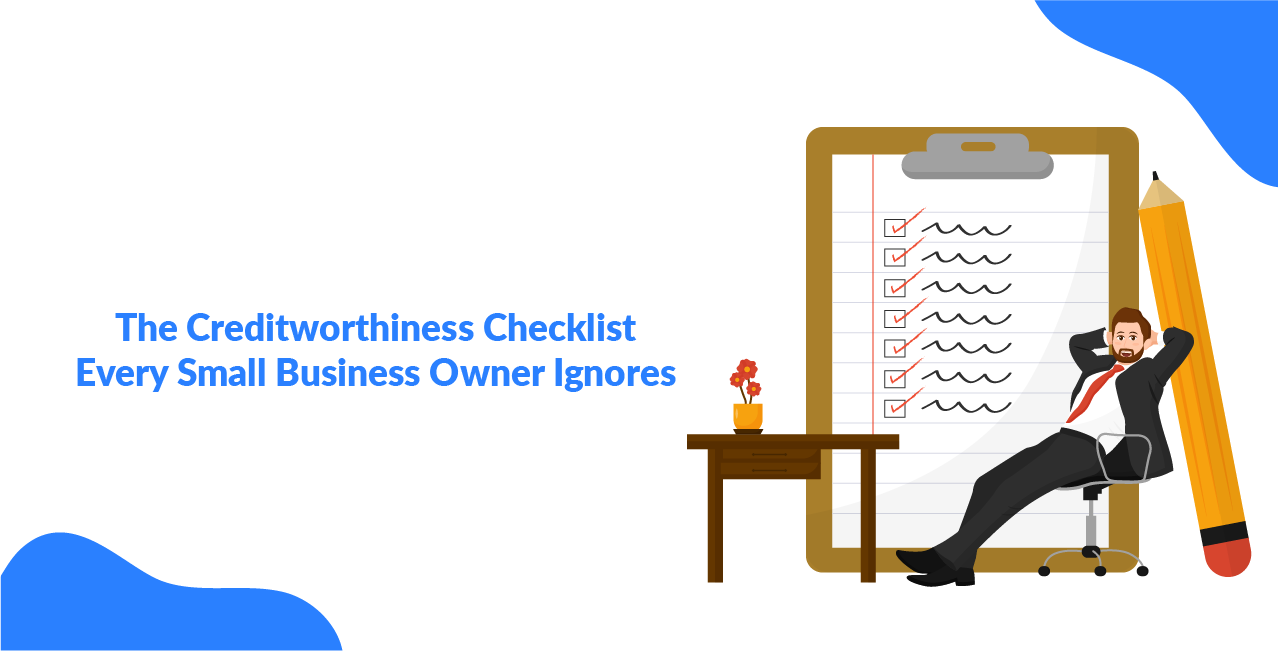
Author
LoansJagat Team
Read Time
13 Min
26 May 2025
The Safest Investment Options During Economic Uncertainty – 2025 Edition
Rudra, a 28-year-old marketing executive from Mumbai, had just received his annual bonus of ₹3,50,000. Excited but clueless about where to invest it, he made a classic mistake. He dumped 80% of his savings into a trendy tech stock - his colleagues had told him it was "the next big thing." 6 months later, the 2025 market crash hit. His ₹2,80,000 investment was now worth ₹1,75,000. Panicked, he stared at his portfolio, realising he had no safety net.
That’s when his grandfather, a retired banker, gave him some hard truths: "Beta, markets will dance, but your savings shouldn’t." He showed him his portfolio – steady, boring investments that had quietly grown over decades without sleepless nights. Fascinated, Rudra decided to dig deeper. What were these mysterious "safe" options that could weather economic storms? How could he protect his hard-earned money while still growing it?
This blog is exactly what Rudra discovered – a guide to the safest investment havens when the financial world feels like a rollercoaster.
1. Fixed Deposit
During times of economic uncertainty, a Fixed Deposit (FD) is considered a reliable and safe investment option. In this, you deposit a fixed amount in the bank for a specific period and earn interest at a fixed rate. One of the main benefits of FD is that it comes with a fixed interest rate, which is not affected by market fluctuations. This allows investors to expect a fixed and secure return on their investment.
For example, a person named Mayank invests ₹1,00,000 in an FD for 1 year. Let’s assume the bank offers a 7% annual interest rate for this period. In this case, Mayank will earn ₹7,000 as interest at the end of the year, and he will receive a total of ₹1,07,000.
The following table presents the details of Mayank’s FD investment:
Investment Amount (₹) | Duration (Years) | Annual Interest Rate (%) | Interest Earned (₹) | Total Amount (₹) |
1,00,000 | 1 | 7 | 7,000 | 1,07,000 |
In this way, FDs are a safe option for investors like Mayank who want a fixed and reliable return on their investment. Today, many banks are offering attractive interest rates on FDs, which can be beneficial for investors.
2. Public Provident Fund (PPF)
During times of economic uncertainty, the Public Provident Fund (PPF) is a safe and reliable investment option. It is backed by the government, and the interest earned on it is tax-free. The lock-in period for PPF is 15 years, which can be extended in blocks of 5 years. For the year 2025, the interest rate on PPF is 7.1% per year, and the interest is compounded annually.
Read More – Understanding the Impact of India-Pakistan Tensions on Stock Markets
Let’s look at an example of investing in PPF:
Year | Annual Investment (₹) | Total Investment (₹) | Annual Interest (₹) | Total Principal + Interest (₹) |
1 | 1,50,000 | 1,50,000 | 10,650 | 1,60,650 |
2 | 1,50,000 | 3,00,000 | 22,831 | 3,22,831 |
3 | 1,50,000 | 4,50,000 | 36,723 | 4,86,723 |
… | … | … | … | … |
15 | 1,50,000 | 22,50,000 | 2,84,639 | 28,68,209 |
In this table, an investment of ₹1,50,000 is made every year. By the end of 15 years, the total investment will be ₹22,50,000, and the total interest earned will be ₹6,18,209, making the final amount ₹28,68,209.
While investing in PPF, keep in mind that interest is calculated on the balance available by the 5th of every month. So, to earn maximum interest, it is better to invest before the 5th of each month.
Overall, PPF is a safe and beneficial investment option that offers tax benefits and a fixed interest rate, making it suitable for investors during economically uncertain times.
3. Gold Investments
Gold is considered a reliable and safe investment during economic uncertainty. It is not only known for its price stability but also acts as an effective hedge against inflation. As of today, April 7, 2025, the price of 24 karat gold in India is ₹9,044 per gram.
For example, let’s assume a girl named Shreya invests in 500 grams of 24 karat gold. In this case, her total investment will be ₹45,22,000 (500 grams × ₹9,044/gram). If the price of gold increases by 10% next year, then the value of her investment will become ₹49,74,200, which shows a profit of ₹4,52,200.
The following table presents the details of this investment:
Investment (in grams) | Initial Price (₹/gram) | Total Investment (₹) | Expected Growth (%) | Future Value (₹) | Profit (₹) |
500 | 9,044 | 45,22,000 | 10 | 49,74,200 | 4,52,200 |
There are several gold investment options available, such as physical gold, Gold ETFs, and Sovereign Gold Bonds. Each option has its advantages and disadvantages, so investors should choose based on their convenience and investment goals.
It is also important to remember that the price of gold is affected by market events and international conditions, so proper analysis before investing is essential.
4. Government Securities (G-Secs)
During times of economic uncertainty, Government Securities (G-Secs) are also considered a safe and reliable investment option. These are issued by the government and come with a sovereign guarantee, which means there is no risk of default. When you invest in G-Secs, you get a fixed interest rate for a set period, which can provide a stable source of income over time.
Let’s say a person named Aarav invests ₹1,00,000 in a G-Sec for 10 years with an annual interest rate of 6.5%. In this case, he will receive ₹6,500 as interest every year. Over 10 years, he will earn a total interest of ₹65,000, and at the end of the period, he will get back his original ₹1,00,000.
Here is a table showing the investment breakdown:
Year | Principal (₹) | Annual Interest (₹) | Total Value (₹) |
1 | 1,00,000 | 6,500 | 1,06,500 |
2 | 1,00,000 | 6,500 | 1,13,000 |
3 | 1,00,000 | 6,500 | 1,19,500 |
… | … | … | … |
10 | 1,00,000 | 6,500 | 1,65,000 |
One of the key advantages of investing in G-Secs is that they are almost risk-free as they are backed by the government. Also, the interest rate is fixed, which gives investors confidence in getting a steady income in the future.
However, G-Secs have a long maturity period, which can cause liquidity issues for investors. So, it is important to analyse your financial needs and situation before investing.
5. Senior Citizen Savings Scheme (SCSS)
During economic uncertainty, the Senior Citizen Savings Scheme (SCSS) is a safe and reliable investment option for senior citizens. It is a government-backed scheme available for individuals aged 60 years or above. In SCSS, one can invest a minimum of ₹1,000 and a maximum of ₹30,00,000. The scheme has a tenure of 5 years, which can be extended for another 3 years.
Currently, SCSS offers an interest rate of 8.2% per year, which is paid quarterly. This scheme also provides tax benefits under Section 80C, allowing tax exemption up to ₹1,50,000 on the invested amount. However, the interest earned is fully taxable.
For example, suppose a person invests ₹10,00,000 in SCSS. They will receive ₹20,500 as interest every quarter (which is one-fourth of 8.2% on ₹10,00,000). Over 5 years, they will receive a total of ₹4,10,000 as interest, and at the end of the period, their original ₹10,00,000 will be returned.
Here is a table showing the investment details:
Year | Principal (₹) | Annual Interest (₹) | Total Value (₹) |
1 | 10,00,000 | 82,000 | 10,82,000 |
2 | 10,00,000 | 82,000 | 11,64,000 |
3 | 10,00,000 | 82,000 | 12,46,000 |
4 | 10,00,000 | 82,000 | 13,28,000 |
5 | 10,00,000 | 82,000 | 14,10,000 |
SCSS is a secure investment choice for senior citizens that provides guaranteed income and tax benefits. However, before investing, it is important to assess one’s financial situation properly.
6. Debt Mutual Funds
During economic uncertainty, debt mutual funds can be a safe and stable investment option. These funds are invested in fixed-income securities like government bonds, corporate bonds, treasury bills, and other debt instruments, which provide predictable income to investors.
Also Read - Are Indian Banks Prepared for the Economic Shock of a War?
Main Types of Debt Mutual Funds:
- Liquid Funds: These funds invest in instruments with a maturity of up to 91 days and are used for short-term investments.
- Ultra Short Duration Funds: These invest in instruments with a 3 to 6-month maturity and offer slightly higher returns.
- Short-Term Debt Funds: These invest in instruments with 1 to 3 years' maturity and are suitable for medium-term goals.
- Long-Term Debt Funds: These invest in instruments with a maturity of more than 3 years, suitable for long-term financial goals.
Benefits of Debt Mutual Funds:
- Stable Income: These funds invest in fixed-interest instruments, giving steady and predictable returns.
- Lower Risk: Compared to equity funds, debt funds are less risky, making them suitable for conservative investors.
- Diversification: These funds invest in a variety of instruments, adding diversity to your portfolio.
Things to Consider While Investing:
- Market Risk: Changes in future interest rates can affect the NAV (Net Asset Value) of the fund.
- Credit Risk: If the fund invests in low-credit-rating securities, there is a higher chance of default.
- Liquidity Risk: Some debt instruments are less liquid, meaning they can be hard to sell quickly if needed.
Example: Kamal invested ₹1,00,000 in a short-term debt mutual fund offering 7% annual returns. After one year, his investment grew to ₹1,07,000, providing a stable income with minimal risk. This approach helped him achieve his medium-term financial goals with peace of mind.
Debt mutual funds are ideal for investors looking for stable income and low risk. However, before investing, it is important to consider your financial goals, risk tolerance, and investment time frame.
7. Real Estate Investment Trusts (REITs)
During economic uncertainty, Real Estate Investment Trusts (REITs) can be an attractive investment option. REITs are organisations that invest in commercial properties and distribute the income earned to their investors. This allows investors to earn from real estate without directly buying property.
Benefits of REITs:
- Regular Income: REITs distribute up to 90% of their income as dividends, which gives steady income to investors.
- Diversification: Investing in REITs adds variety to your portfolio, helping to reduce risk.
- Liquidity: REITs are listed on stock exchanges, so it is easy to buy and sell them.
Example:
Suppose a person invests ₹10,00,000 in REITs, which give an 8% return in the 1st year but face a 10% decline in value in the following years.
Year | Initial Investment (₹) | Annual Return (%) | Annual Gain/Loss (₹) | Total Value (₹) |
1 | 10,00,000 | 8% | 80,000 | 10,80,000 |
2 | 10,80,000 | -10% | -1,08,000 | 9,72,000 |
3 | 9,72,000 | -10% | -97,200 | 8,74,800 |
4 | 8,74,800 | -10% | -87,480 | 7,87,320 |
5 | 7,87,320 | -10% | -78,732 | 7,08,588 |
This example shows that REITs can result in both gains and losses. So, before investing, it is important to analyse your financial goals and risk tolerance.
8. Corporate Bonds
During economic uncertainty, corporate bonds can be a good option that provides investors with stable income.
These bonds are issued by companies to raise money for business expansion or other needs. By buying these bonds, investors lend money to the company. In return, the company pays fixed interest (called coupon rate) for a set period and returns the principal amount at maturity.
Key Features of Corporate Bonds:
- Fixed Interest Rate (Coupon Rate): Corporate bonds offer a fixed rate of interest, giving investors regular income.
- Maturity Period: Each bond has a fixed maturity date when the principal amount is returned.
- Credit Rating: Bonds are rated by credit rating agencies, which show the company’s ability to repay debt. Bonds with higher ratings are considered less risky.
Example:
Suppose a person named Saurabh invests ₹5,00,000 in a corporate bond with an 8% interest rate and a 5-year maturity.
Year | Principal (₹) | Annual Interest (₹) | Total Value (₹) |
1 | 5,00,000 | 40,000 | 5,40,000 |
2 | 5,00,000 | 40,000 | 5,80,000 |
3 | 5,00,000 | 40,000 | 6,20,000 |
4 | 5,00,000 | 40,000 | 6,60,000 |
5 | 5,00,000 | 40,000 | 7,00,000 |
In this example, Saurabh earns ₹40,000 interest every year (8% of ₹5,00,000). Over 5 years, he earns a total interest of ₹2,00,000 and gets his original investment of ₹5,00,000 back, making the total ₹7,00,000.
Benefits of Corporate Bonds:
- Higher Returns: Corporate bonds usually offer higher interest rates than government bonds.
- Diversification: They help to diversify your investment portfolio, reducing overall risk.
- Regular Income: The fixed interest payments provide a steady source of income.
Things to Consider:
- Credit Risk: If the company fails to repay, investors could lose money.
- Market Risk: Changes in interest rates can affect the bond’s market value.
So, before investing in corporate bonds, it is important to check the company’s financial health, credit rating, and market conditions.
9. Post Office Monthly Income Scheme (POMIS)
The Post Office Monthly Income Scheme (POMIS) is a safe and reliable investment option that provides investors with a fixed monthly income. This scheme is especially suitable for people who want a steady and guaranteed return on their investment.
Key Features of POMIS:
- Interest Rate: From 1st January 2025, POMIS offers an annual interest rate of 7.4%, which is paid monthly.
- Investment Limit: A single person can invest up to ₹9,00,000, and a joint account can invest up to ₹15,00,000.
- Maturity Period: The scheme has a 5-year duration.
- Account for Children: An account can also be opened in the name of children aged 10 years or above.
Benefits of POMIS:
- Fixed Income: You receive a fixed interest every month, which helps in financial planning.
- Safe Investment: As this is backed by the Government of India, it is considered very secure.
- Transfer Facility: You can transfer your account from one post office to another.
Things to Consider Before Investing:
- Taxation: The interest earned is taxable, but no TDS (Tax Deducted at Source) is applied.
- Premature Withdrawal: If you withdraw money before 5 years, a penalty will be charged.
POMIS is a great choice for people looking for a fixed and secure monthly income from their investments. However, it is important to assess your financial goals and needs before investing.
Conclusion
When the economy has mood swings like a Bollywood hero’s breakup scene, safe investments become that little umbrella that protects you from financial rain.
FD is that boring-but-dependable friend who gives fixed returns every year without any drama.
PPF is the desi version of "slow and steady wins the race" – tax-free, government-backed, and after 15 years, you will feel like you got a bonus on your FD interest.
Gold? That’s the OG “safe haven” that keeps shining even during inflation – whether digital or physical, this gold investment never goes out of style. Debt mutual funds are like that uncle who does not take risks but also gives calm and steady returns.
REITs have made real estate feel like the stock market – money from property without the stress of EMIs!
Corporate bonds take a little risk, but if the company is stable, then the returns also come in full filmy style.
And POMIS? That’s like a “monthly salary kind of passive income” that comes from the post office – no surprises, no shocks, just steady money.
So, friends, when the market is firing bullets, quietly build wealth with these safe options. Because even in financial planning, a little swag is necessary – safe but not boring!
FAQs
1. Are fixed deposits (FDs) completely risk-free?
While FDs are one of the safest options, they are not entirely risk-free – inflation can sometimes eat into your real returns. However, they are perfect for those who want predictable earnings without market drama.
2. Why is gold considered a safe investment during inflation?
Gold holds its value over time and tends to rise when paper currencies weaken, making it a reliable shield against inflation. Plus, it is a tangible asset that does not rely on any company’s performance.
3. Can I withdraw my PPF investment before 15 years?
Yes, but only partially after 5 years, and with some conditions—otherwise, it is a long-term commitment. The lock-in ensures you reap the full benefits of compounding and tax-free returns.
4. Do debt mutual funds guarantee returns like FDs?
No, they do not guarantee returns since their value fluctuates slightly with interest rate changes, but they are still safer than stocks. They are ideal for those who want better returns than FDs with slightly higher (but controlled) risk.
5. Are REITs better than buying actual property?
REITs give you real estate exposure without the hassle of maintenance or huge capital—just buy/sell like stocks. But unlike physical property, you won’t own any land; you are just earning from rent and price appreciation.
About the Author

LoansJagat Team
‘Simplify Finance for Everyone.’ This is the common goal of our team, as we try to explain any topic with relatable examples. From personal to business finance, managing EMIs to becoming debt-free, we do extensive research on each and every parameter, so you don’t have to. Scroll up and have a look at what 15+ years of experience in the BFSI sector looks like.

Quick Apply Loan
Subscribe Now
Related Blog Post


